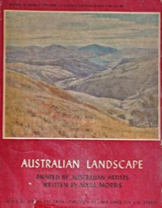 Myra Morris was an Australian poet whose work often portrayed the joyful lifting of the spirits that a person could feel from a simple walk in the country. She also wrote short stories and novels for both children and adults.
Myra Morris was an Australian poet whose work often portrayed the joyful lifting of the spirits that a person could feel from a simple walk in the country. She also wrote short stories and novels for both children and adults.
She was born Myra Evelyn Morris on the 15th May 1893 in the small Victorian town of Boort. She was one of a family of five children, the daughter of an English-born and very successful grocer who owned premises in different towns. Thus Myra spent her early years travelling around wherever her father’s businesses happened to be. Her main schooling was at the Brigidine Convent in Rochester and she developed a talent for writing there, grealty encouraged by her English teacher.
During her early twenties she managed to get her poems and short stories accepted by a variety of publications, including the prestigious Sydney Bulletin. This, no doubt, encouraged her to produce a collection of poetry called England and Other Verses which was published in 1918. She followed this up, in 1922, with a novel for children called Us Five. One for adults came seven years later. A short visit to England in 1930 enabled her to see the land where her father was born but she returned to Frankston, Victoria and remained there for the rest of her life. The family home there was a happy-go-lucky environment and Myra insisted on paying board to her parents and contributing to the household chores and general management.
She was very much an outdoors lover with a “zest of youth and the sheer joy of living”. She loved to be out in the sunshine, walking the lanes or on the beaches, enjoying the sight and sounds of the sea crashing onto the shore. She shared this joy of nature with her mother and it was she who encouraged her daughter to write. A good example of her pastoral work was a poem called A Morning Walk and the opening section of this piece is reproduced below:

Her vivid descriptions of Australian landscapes were well received by readers of various newspapers and she was one of the originators of the Melbourne branch of P.E.N. International. She was certainly a prolific writer with some 300 poems and over a hundred short stories carrying her name. Despite this though her output of published books during her lifetime was very small. Morris seemed content to make regular contributions to periodicals and journals and some of her work appeared in anthologies of Australian literature. She was also called upon to do a spot of book reviewing from time to time, as well as editorial work for newspapers.
Besides writing she also studied art for two years under the distinguished artist Alexander Colquhoun and found that she had some talent for wood carving. It was writing though, especially short stories, that she is best known for and her talent for bringing small-town Australia to life for her readers was remarkable. She used humour and poetic imagery to do so and her work was extremely popular. A second volume of poetry called White Magic came out in 1929.
Unfortunately her later years were beset with illness and she was crippled with Paget’s disease which affected her bones. She also had a nervous breakdown during the 1940s. Her work continued to enjoy wide exposure though, with some of it being translated and published in a number of European countries.
Myra Morris died at Frankston on the 18th August 1966 at the age of 73.

